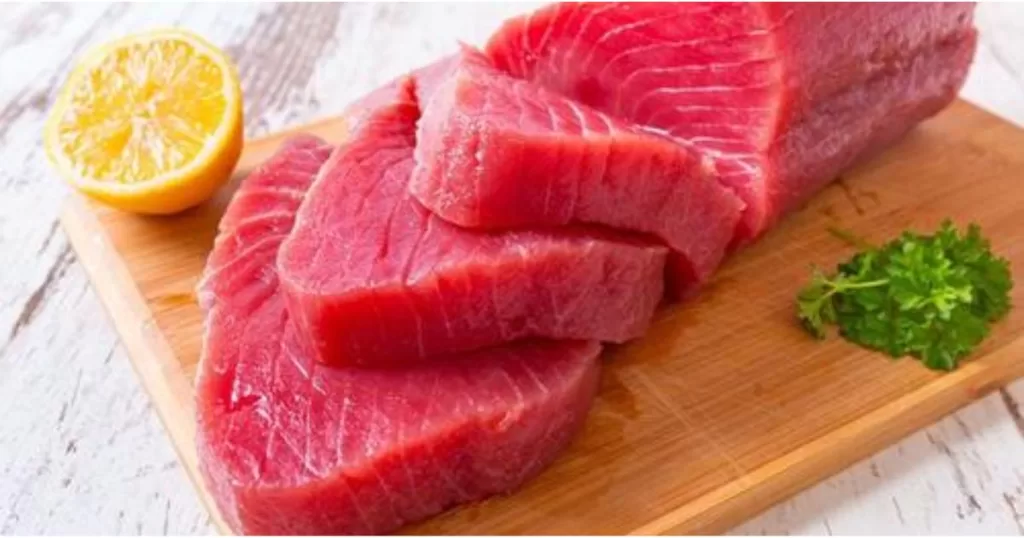The Truth About That Bright Red Tuna You Love
That vibrant, tantalizing tuna sitting pretty in your local grocery store? The glistening ruby red cubes garnishing your neighborhood poke bowl?
It’s the tuna that you think is fresh, healthy, delicious. It’s the tuna that you think is perfect.

But it’s not.
That bright red or pink tuna is a fraud. It’s not fresh. It’s not natural. It’s not safe.
It’s gassed.

Yes, you heard that right. It’s been sprayed with carbon monoxide, a gas that you can’t see, smell, or taste. A gas that suffocates your cells and prevents them from getting oxygen. A gas that alters the color of the tuna from brown to red.
Why would anyone do that to a fish? Because of you. Because you’ve been brainwashed to think that red is good, and brown is bad. Because you’ve been exploited by the food industry, the FDA, and your own senses.
But here is the truth that most people don’t know, or don’t want to know. Bright red or pink tuna is not what you think it is. Here are two reasons why you should boycott it at all costs:
You Have No Clue if It’s Fresh or Not
Carbon monoxide preserves the color of the tuna, but not the quality. It can conceal the signs of rot, such as browning, odor, and texture. It can make a rotten fish look like a fresh one.
In fact, this paper, published in the Journal of Food Science, compares the quality of fillets treated with carbon monoxide (CO) and untreated (UT) fillets stored at different temperatures.
The paper reports that CO treatment extended the shelf life of fillets by preventing color changes and reducing lipid oxidation.
However, CO treatment also masked the spoilage indicators such as odor and total volatile base nitrogen (TVB-N), making it difficult to assess the freshness of the fillets. The paper suggests that CO treatment should be used with caution.
You Don’t Know What It’s Doing to Your Body
The FDA says that gassed tuna is safe to eat, and that carbon monoxide is GRAS (Generally Regarded As Safe). But do you really trust the FDA?
The same FDA that endorsed the 1992 food pyramid, which recommended carbs as the main source of calories? The same FDA that allowed trans fats, which cause heart disease and stroke, until they banned them in 2019?
Do not ignore the fact that carbon monoxide is banned in Japan, Canada, and the EU, where they have stricter food safety standards.

That’s what fresh tuna looks like. That’s what fresh tuna should look like. There’s nothing wrong with a dark-colored tuna loin.
What You Can Do
If you care about your health, your wallet, and your planet, you can do something about this. You can stop buying gassed tuna and demand fresh, un-gassed tuna from your local fishmonger, supermarket, or restaurant.
You can ask where the fish is from, how it’s caught, and the handling methods used to get it to you.
You can avoid suspicious bright colors when sourcing tuna.
You can educate yourself and others about the dangers and deception of gassed tuna.
You can support domestic fisheries that comply with the regulations and standards that protect you and the environment.
It is not worth saving a few bucks to eat a fish that is not what it seems.